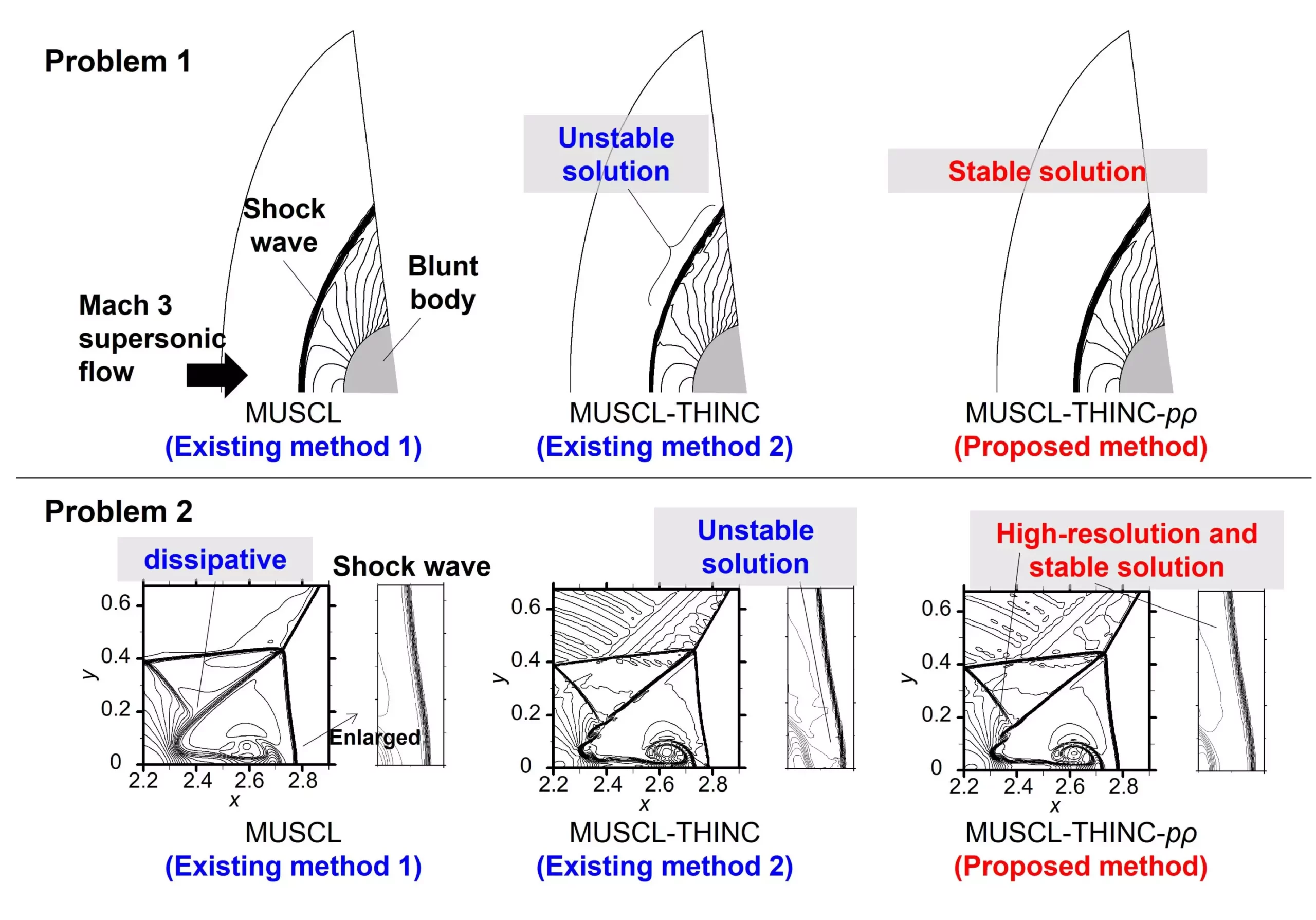In the realm of fluid dynamics, the quest for precision in simulating compressible flows has been a significant challenge, particularly as phenomena such as shock waves and discontinuities occur. A recent advancement in this field promises to address longstanding issues and deliver more accurate results. A dedicated team of researchers from Yokohama National University has unveiled a transformative hybrid computational scheme, known as T-MUSCL, which incorporates concepts from established methods to enhance the simulation of both steady and unsteady compressible flows.
The Core of the T-MUSCL Scheme
The foundation of the T-MUSCL method lies in the combination of two influential numerical techniques: the Monotonic Upstream-centered Schemes for Conservation Laws (MUSCL) and the Tangential Hyperbolic Interface Capturing (THINC) method. This hybrid approach is designed with a clear goal: to achieve a nuanced balance between capturing complex physical phenomena and maintaining computational efficiency. While traditional MUSCL methods have garnered praise for their simplicity and effectiveness in fundamental flows, they often falter when confronted with complex interactions, yielding solutions that can be overly dissipative. The researchers, led by associate professor Keiichi Kitamura, have sought to bridge the gap between academic complexity and practical engineering needs with their elegant yet powerful method.
Enhanced Accuracy and Stability
The T-MUSCL hybrid scheme is characterized by its enhanced accuracy in simulating both weak and strong shock waves. This is a significant leap, given the historical issues faced by conventional methods in accurately modeling such behaviors. With the introduction of two novel parameters — a nonlinearity-weighted parameter and a slope-ratio-weighted parameter — T-MUSCL adapts intelligently based on the degree of nonlinearity inherent to the fluid flow being studied.
What sets T-MUSCL apart is its sophisticated algorithm that can dynamically adjust to local flow characteristics, resulting in substantially reduced errors during continuous flow simulations. The method shines particularly when simulating weak shocks, which traditional MUSCL techniques struggled to capture without introducing undesirable numerical dissipation. By addressing limitations in conventional approaches, T-MUSCL provides researchers the capability to simulate realistic fluid dynamics with greater confidence and fidelity.
Practical Applications in Engineering
The implications of this research extend far beyond academic curiosity. The ability to accurately simulate compressible flows has direct applications in various engineering fields, notably in aerospace and mechanical engineering. Given the critical nature of fluid dynamics in engine design, aircraft aerodynamics, and environmental fluid mechanics, T-MUSCL stands to influence multiple industries by facilitating better design, optimization, and troubleshooting processes.
Professor Kitamura elucidates this vision with remarkable clarity: “We believe our method will be widely adopted by researchers studying fluid dynamics.” The researchers’ aspirations are not merely academic; they aim to apply their newfound method to real-world engineering problems to further validate and refine their approach.
An Open Invitation to Future Researchers
One of the compelling aspects of the T-MUSCL method is its accessibility. Designed as a second-order spatial scheme, this unique feature enhances its appeal to researchers and engineers alike. The ease with which T-MUSCL can be integrated into existing computational frameworks, without introducing excessive complexity, acts as an open invitation for broader implementation. This accessibility could accelerate the pace at which innovations in fluid dynamics reach practical application, ultimately benefiting sectors reliant on cutting-edge simulations.
Their ambition resonates in Gaku Fukushima’s statement regarding the ultimate objective of their research: “to deepen our understanding of compressible flow dynamics and shock waves.” With the T-MUSCL scheme, the researchers are not merely providing a tool; they are laying the groundwork for significant advancements in our comprehension of fluid behavior under varied conditions.
A Future of Possibilities
As the team gears up to apply their pioneering method to engineering challenges, one can only anticipate the myriad of possibilities that will arise from their work. The fusion of high-resolution simulation capabilities with relative simplicity marks a turning point in the field of fluid dynamics. The era of T-MUSCL is set to redefine standards, empower engineers, and enrich our understanding of complex flow phenomena.
The continuous evolution of numerical methods, as seen in the promising T-MUSCL scheme, emphasizes the importance of bridging theoretical advancements with practical capabilities in science and engineering. The journey of fluid dynamics simulation is far from over, and the contributions from innovative approaches like T-MUSCL will undoubtedly help propel the field into an exciting future.

